Filter by

Modern Philosophy
This is a textbook (or better, a workbook) in modern philosophy. It combines readings from primary sources with two pedagogical tools. Paragraphs in italics introduce figures and texts. Numbered study questions (also in italics) ask students to reconstruct an argument or position from the text, or draw connections among the readings. Creator
- Edition
- -
- ISBN/ISSN
- -
- Collation
- -
- Series Title
- -
- Call Number
- 100 OTT m
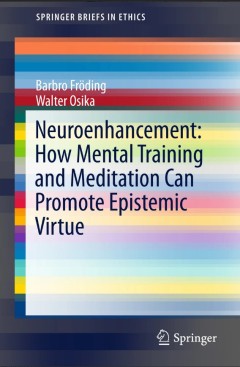
Neuroenhancement: how mental training and meditation can promote epistemic vi…
This book explores how one can bring about changes in the brain through meditation, both through attention-focus training and through compassion training. Recent findings in the natural sciences have confirmed that it is possible for humans to achieve these structural and functional changes through various life-style practices. It is argued that meditation enables us to influence some aspects o…
- Edition
- 1
- ISBN/ISSN
- 978-3-319-23516-5
- Collation
- XI, 110
- Series Title
- SpringerBriefs in Ethics
- Call Number
- -
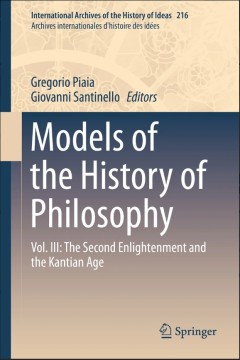
Models of the History of Philosophy:Vol. III: The Second Enlightenment and th…
This is the third volume of Models of the History of Philosophy, a collaborative work on the history of the history of philosophy dating from the Renaissance to the end of the nineteenth century. The volume covers a decisive period in the history of modern thought, from Voltaire and the great “Encyclopédie” of Diderot and d'Alembert to the age of Kant, i.e. from the histoire de l'esprit hu…
- Edition
- 1
- ISBN/ISSN
- 978-94-017-9965-2
- Collation
- XXXII, 1000
- Series Title
- International Archives of the History of Ideas Archives internationales d'histoire des idées
- Call Number
- -
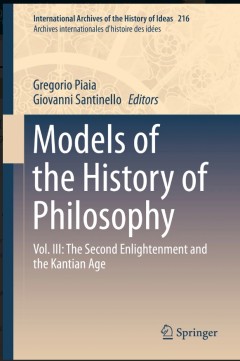
Models of the History of Philosophy:Vol. III: The Second Enlightenment and th…
This is the third volume of Models of the History of Philosophy, a collaborative work on the history of the history of philosophy dating from the Renaissance to the end of the nineteenth century. The volume covers a decisive period in the history of modern thought, from Voltaire and the great “Encyclopédie” of Diderot and d'Alembert to the age of Kant, i.e. from the histoire de l'esprit hu…
- Edition
- 1
- ISBN/ISSN
- 978-94-017-9965-2
- Collation
- XXXII, 1000
- Series Title
- International Archives of the History of Ideas Archives internationales d'histoire des idées
- Call Number
- -
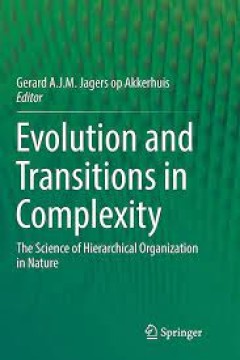
Evolution and Transitions in Complexity The Science of Hierarchical Organiza…
This book discusses several recent theoretic advancements in interdisciplinary and transdisciplinary integration in the field of evolution. While exploring novel views, the text maintains a close link with one of the most broadly held views on evolution, namely that of “Darwinian evolution.” This work puts forth a new point of view which allows researchers to define in detail the concep…
- Edition
- -
- ISBN/ISSN
- 978-3-319-43802-3
- Collation
- 25 b/w illustrations, 3 illustrations in colour
- Series Title
- -
- Call Number
- -

Mind in Action
The book questions two key dichotomies: that of the apparent and real, and that of the internal and external. This leads to revised notions of the structure of experience and the object of knowledge. Our world is experienced as possibilities of action, and to know is to know what to do. A further consequence is that the mind is best considered as a property of organisms’ interactions with the…
- Edition
- 1
- ISBN/ISSN
- 978-3-319-17622-2
- Collation
- XII, 94
- Series Title
- Studies in Applied Philosophy, Epistemology and Rational Ethics
- Call Number
- -
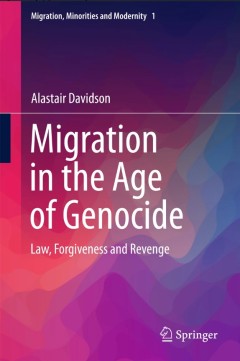
Migration in the Age of Genocide
This book presents a novel proposal for establishing justice and social harmony in the aftermath of genocide. It argues that justice should be determined by the victims of genocide rather than a detached legal system, since such a form of justice is more consistent with a socially grounded ethics, with a democracy that privileges citizen decision-making, and with human rights. The book cover…
- Edition
- 1
- ISBN/ISSN
- 978-3-319-21848-9
- Collation
- XIV, 216
- Series Title
- Migration, Minorities and Modernity
- Call Number
- -
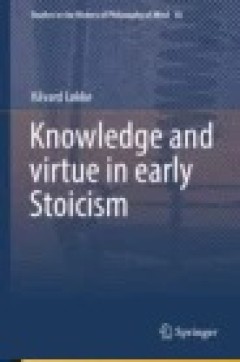
Knowledge and virtue in early Stoicism
This book is about the epistemological views and arguments of the early Stoics. It discusses such questions as: How is knowledge possible, and what is it? How do we perceive things and acquire notions of them? Should we rely on arguments? How do we come to make so many mistakes? The author tries to give a comprehensive and conservative account of Stoic epistemology as a whole as it was devel…
- Edition
- -
- ISBN/ISSN
- 978-94-007-2153-1
- Collation
- -
- Series Title
- -
- Call Number
- -
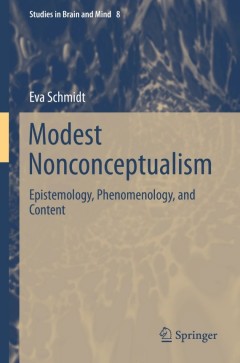
Modest Nonconceptualism:Epistemology, Phenomenology, and Content
The author defends nonconceptualism, the claim that perceptual experience is nonconceptual and has nonconceptual content. Continuing the heated and complex debate surrounding this topic over the past two decades, she offers a sustained defense of a novel version of the view, Modest Nonconceptualism, and provides a systematic overview of some of the central controversies in the debate. An expli…
- Edition
- 1
- ISBN/ISSN
- 978-3-319-18901-7
- Collation
- xi, 268
- Series Title
- Studies in Brain and Mind
- Call Number
- -
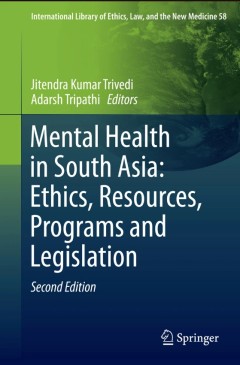
Mental Health in South Asia: Ethics, Resources, Programs and Legislation
Asia is by far the largest continent in the world in terms of area with population exceeding 3.5 billion and has dozens of cultures, religions, languages and ethnic groups. As a result of its highly varied political systems, Asia also spawns a wide variety of health care systems including mental health care systems, often based on historical roots and at times colonial heritages. The people who…
- Edition
- 1
- ISBN/ISSN
- 978-94-017-9016-1
- Collation
- XV, 363
- Series Title
- International Library of Ethics, Law, and the New Medicine
- Call Number
- -
 Computer Science, Information & General Works
Computer Science, Information & General Works  Philosophy & Psychology
Philosophy & Psychology  Religion
Religion  Social Sciences
Social Sciences  Language
Language  Pure Science
Pure Science  Applied Sciences
Applied Sciences  Art & Recreation
Art & Recreation  Literature
Literature  History & Geography
History & Geography